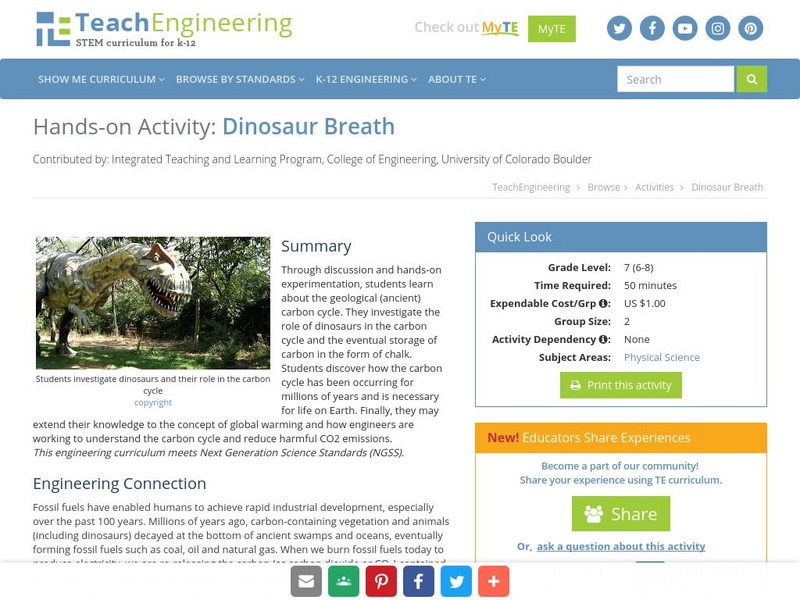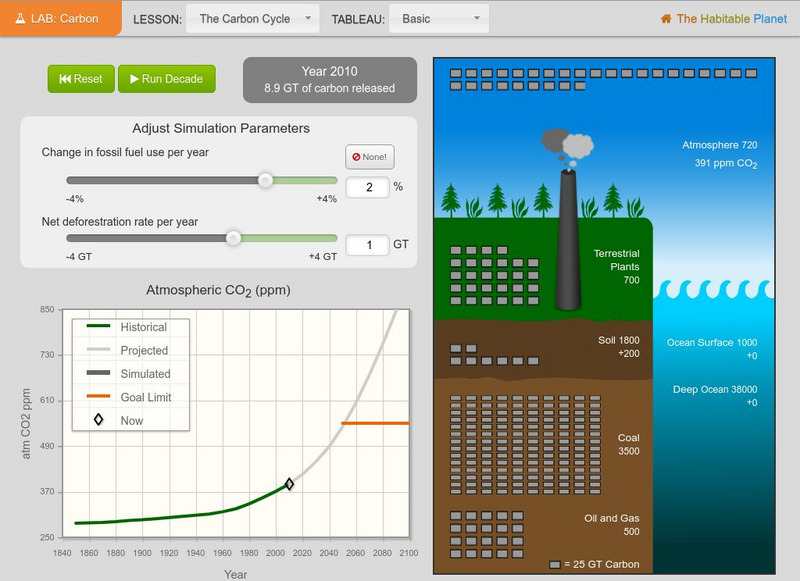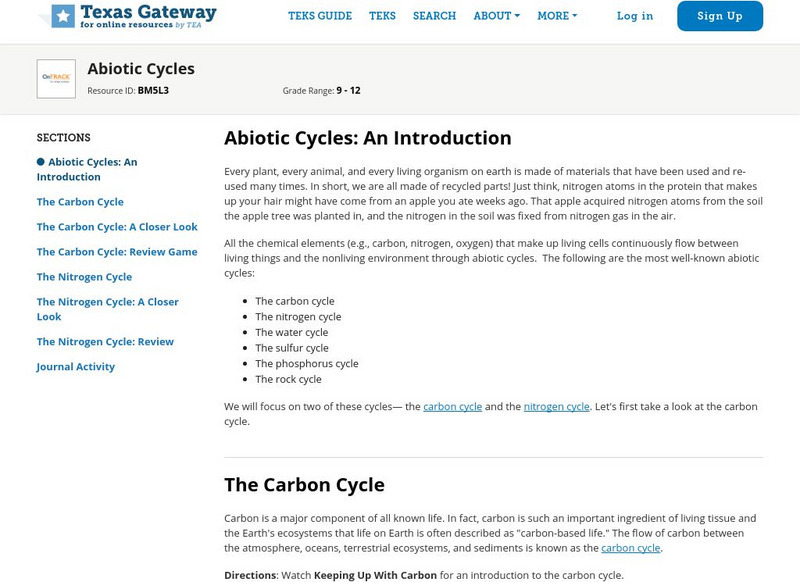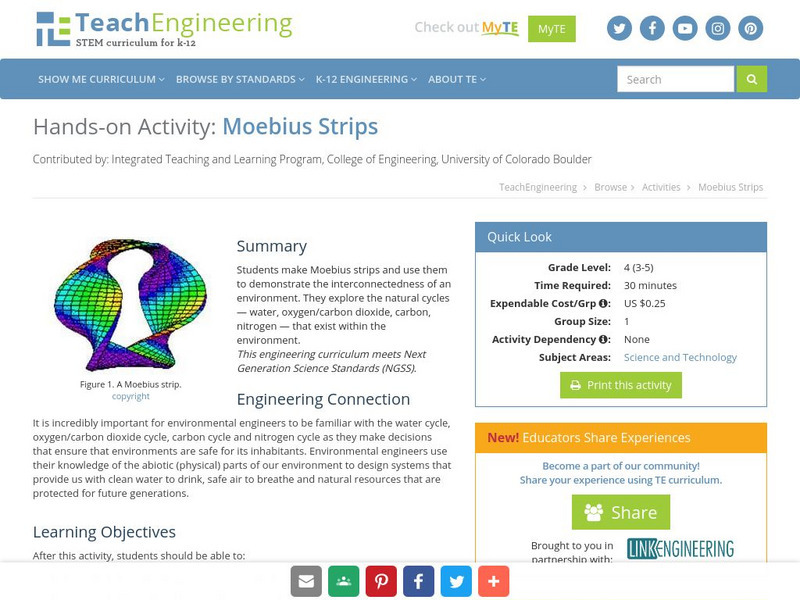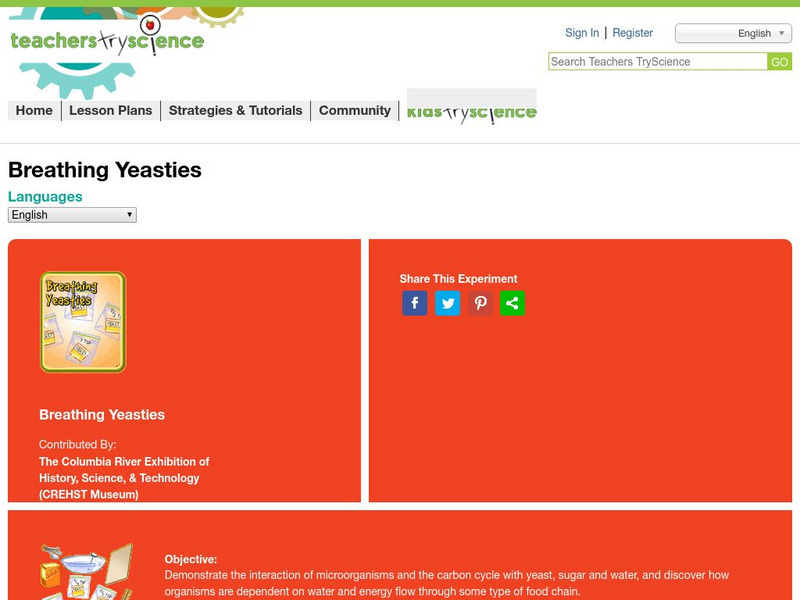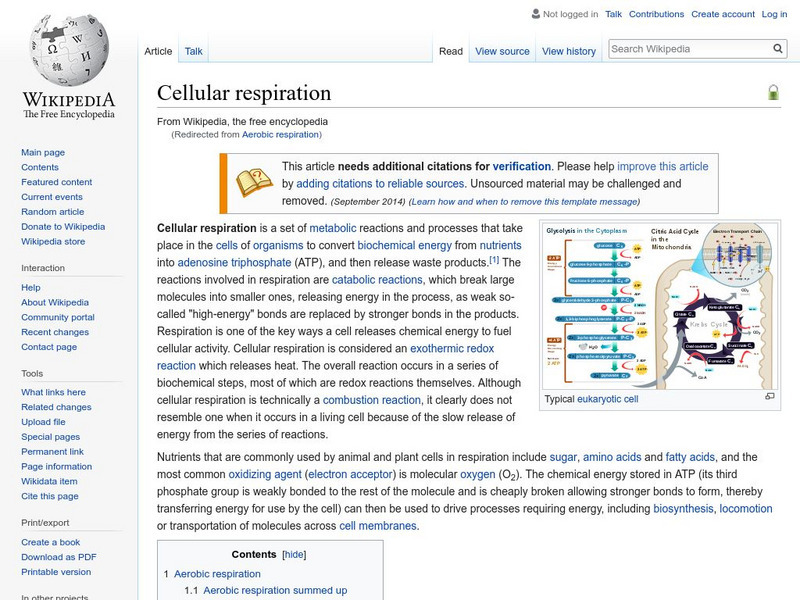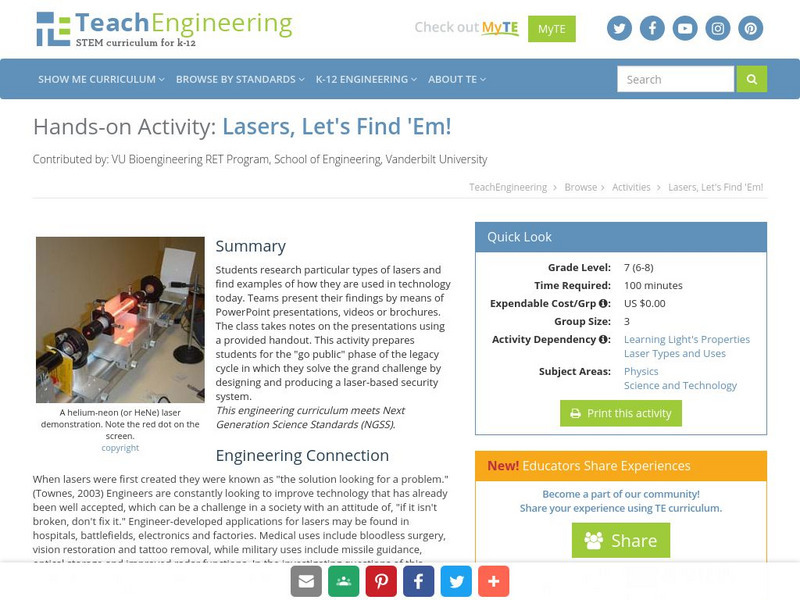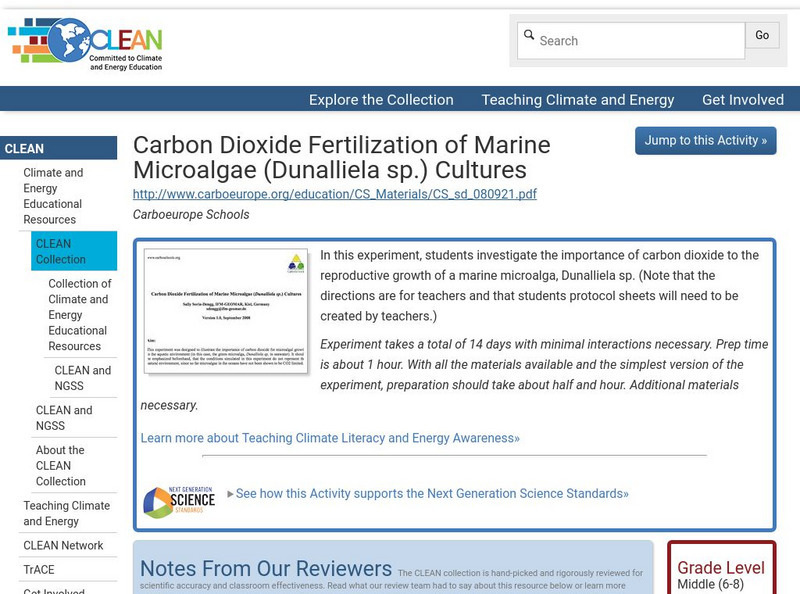Hi, what do you want to do?
Other
Water on the Web
Water on the Web (WOW) is an advanced site allowing students to actively participate in data analysis from real research sites. Lesson plans on a range of topics are provided. There is also a tutorial for using Excel to graph WOW data.
TeachEngineering
Teach Engineering: Dinosaur Breath
Through discussion and hands-on experimentation, students learn about the geological (ancient) carbon cycle. They investigate the role of dinosaurs in the carbon cycle and the eventual storage of carbon in the form of chalk. Students...
TeachEngineering
Teach Engineering: Biorecycling: Using Nature to Make Resources From Waste
By studying key processes in the carbon cycle, such as photosynthesis, composting, and anaerobic digestion, students learn how nature and engineers biorecycle carbon.
Annenberg Foundation
Annenberg Learner: Carbon Lab
This lab uses a robust model of the carbon cycle to give an intuitive sense for how carbon circulates through the atmosphere, biosphere, oceans, and crust.
CK-12 Foundation
Ck 12: Earth Science: Carbon Cycle and Climate
[Free Registration/Login may be required to access all resource tools.] How carbon circulates throughout the environment.
CK-12 Foundation
Ck 12: Earth Science: Carbon Cycle and Climate
[Free Registration/Login may be required to access all resource tools.] How carbon circulates throughout the environment.
Texas Education Agency
Texas Gateway: Abiotic Cycles
Given scenarios, illustrations, or descriptions, the student will describe the flow of matter through carbon and nitrogen cycles and describe the consequences of disrupting these cycles.
Annenberg Foundation
Annenberg Learner: The Habitable Planet: Carbon Lab
An interactive lab simulation demonstrates the effects of increased carbon in the atmosphere and how that increase contributes to climate change. A data table for student records is available for download.
Climate Literacy
Clean: Carbon Cycle Game
For this interactive, regionally-relevant carbon cycle game, students are challenged to understand the role of carbon in global climate change. They imagine that they are carbon molecules and travel via different processes through carbon...
Ducksters
Ducksters: Science for Kids: Carbon Cycle
Kids learn about the carbon cycle and how this nutrient travels through the ecosystem to sustain life on Earth.
Morning Earth
How Life Works: Biosphere Is Process: Animal & Plant Gas Exchange
Scholars explore the biology concept of the oxygen cycle. The tutorial consists of definitions and pictures about animal and plant gas exchange.
TeachEngineering
Teach Engineering: Moebius Strips
In this activity, students make Moebius strips and use them to demonstrate the interconnectedness of an environment. They will explore the natural cycles (water, oxygen/carbon dioxide, carbon, nitrogen) within the environment.
Teachers TryScience
Teachers Try Science: Breathing Yeasties
See how combining yeast, sugar, and water can demonstrate the carbon cycle and show how microorganisms work in the food chain.
Wikimedia
Wikipedia: Aerobic Respiration
Wikipedia provides an indepth yet brief description of the oxygen dependent respiration with links to Kreb's cycle and Oxidative phosphorylation.
NASA
Nasa: Cosmic Chemistry: An Elemental Question
Explore the periodic table like never before! This downloadable program module for students comes absolutely complete with teacher modules, student assessments, PowerPoints, Excel spreadsheets, historical text readings and more. Students...
TeachEngineering
Teach Engineering: Lasers, Let's Find 'Em!
Students research particular types of lasers and find examples of how they are used in technology today. Teams present their findings by means of PowerPoint presentations, videos or brochures. The class takes notes on the presentations...
National Geographic
National Geographic: Sources, Sinks, and Feedbacks
Students will learn about how the Earth's carbon cycle works, as they examine the relationship between levels of carbon dioxide and water vapor in the atmosphere and the temperature of the ocean's surface. Includes online student...
Nature Research
Nature Education: Energy Economics in Ecosystems
This article discusses how plants and microorganisms, until recently, have mostly controlled how much carbon dioxide is released into an ecosystem, and explains how this process works. Humans' burning of fossil fuels has upset the...
Read Works
Read Works: A Drop's Journey
[Free Registration/Login Required] An informational text about water and the water cycle. A question sheet is available to help students build skills in reading comprehension.
Climate Literacy
Clean: Carbon Dioxide Fertilization of Marine Microalgae Cultures
In this experiment, students investigate the importance of carbon dioxide to the reproductive growth of a marine microalga, Dunalliela sp.
Climate Literacy
Clean: Carbon Dioxide Sources and Sinks
For this lab activity, students use a chemical indicator (bromothymol blue) to detect the presence of carbon dioxide in animal and plant respiration and in the burning of fossil fuels and its absence in the products of plant...
PBS
Pbs: Nova: Illuminating Photosynthesis
To understand the process of photosynthesis, follow the hydrogen, carbon, and oxygen atoms as they travel between the air, the plant, and the soil.
NASA
Nasa: Carbon: Where Does It All Go?
At this site from NASA you can understand how phytoplankton help the carbon dioxide levels between the oceans and the air stay in balance.
BioMan Biology
Bio Man Biology: Photosynthesis Respiration Game!
Learn about the chemistry of photosynthesis and respiration as you play this game.






